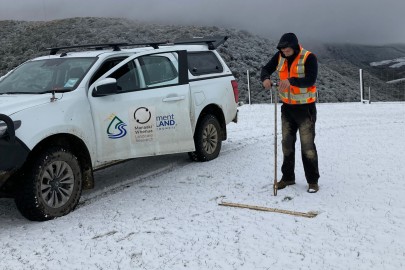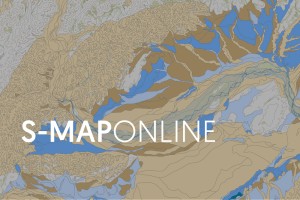
Dr Balin Robertson surveying in Mokoreta in the deep south during the October 2022 late spring snow, for the Southland S-map extension
Over the past four years, and thanks to a partnership between the Ministry for Primary Industries, Manaaki Whenua, and 12 regional councils, 2 million hectares were added to the database.
A further 1.5 million hectares are expected to be completed by 2025.
Manaaki Whenua science portfolio leader Dr Sam Carrick says that within the farmable land area, the land that has the potential for multiple types of use now has 68% of its soils mapped.
Sam acknowledges the many staff who have contributed to this latest update for S-map, released at the end of August. In this past year, staff from the Hamilton, Palmerston North, Wellington and Lincoln offices have had significant involvement.
S-map is more than a soil map, it’s a soil information system, with a comprehensive database and modelling research platform (led by Dr Linda Lilburne), delivering data and information across a number of platforms and tools (led by Dr David Medyckyj-Scott).
Alongside the soil scientists and laboratory staff, who do the mapping and soil attribute characterisation, the modern soil information system includes staff across a range of disciplines, such as spatial and data science modellers, database informatics, software and website developers.
Linda says more than 5,500 different soil types have been mapped so far, with information on each soil type freely available on the popular S-map Online website.
S-map information is extensively used across a range of sectors to enable more informed decisions to manage our land within environmental limits. In the past year alone, users downloaded 54,000 soil information sheets.
In this latest update 680,000 hectares of new soil mapping was released. Newly mapped areas are located in Northland (near Moerewa), Manawatu (Horowhenua), Wellington (Wairarapa) and Canterbury (upper Rakaia) regions.
A new improved map was also published to replace five separate legacy maps, completed at different times by different people. The new map covers an area across the Hauraki Plains, Coromandel Peninsula, and the west side of the Kaimai ranges and Mamaku Plateau.
Other S-map Online updates include three new layers of soil attribute information. A new soil carbon concentration layer is available for all of New Zealand, replacing the existing soil carbon stocks layer. This layer is only suitable for viewing the spatial pattern at a regional scale; it is not accurate at the farm scale. Two layers of soil susceptibility or vulnerability are also available: nitrate leaching and by-pass flow susceptibility.

